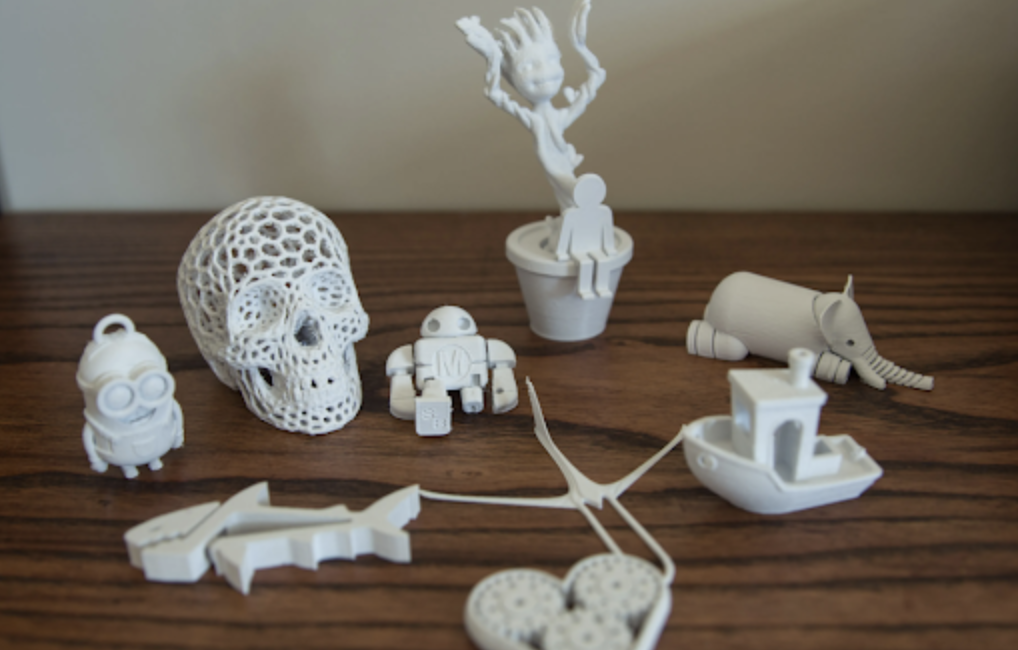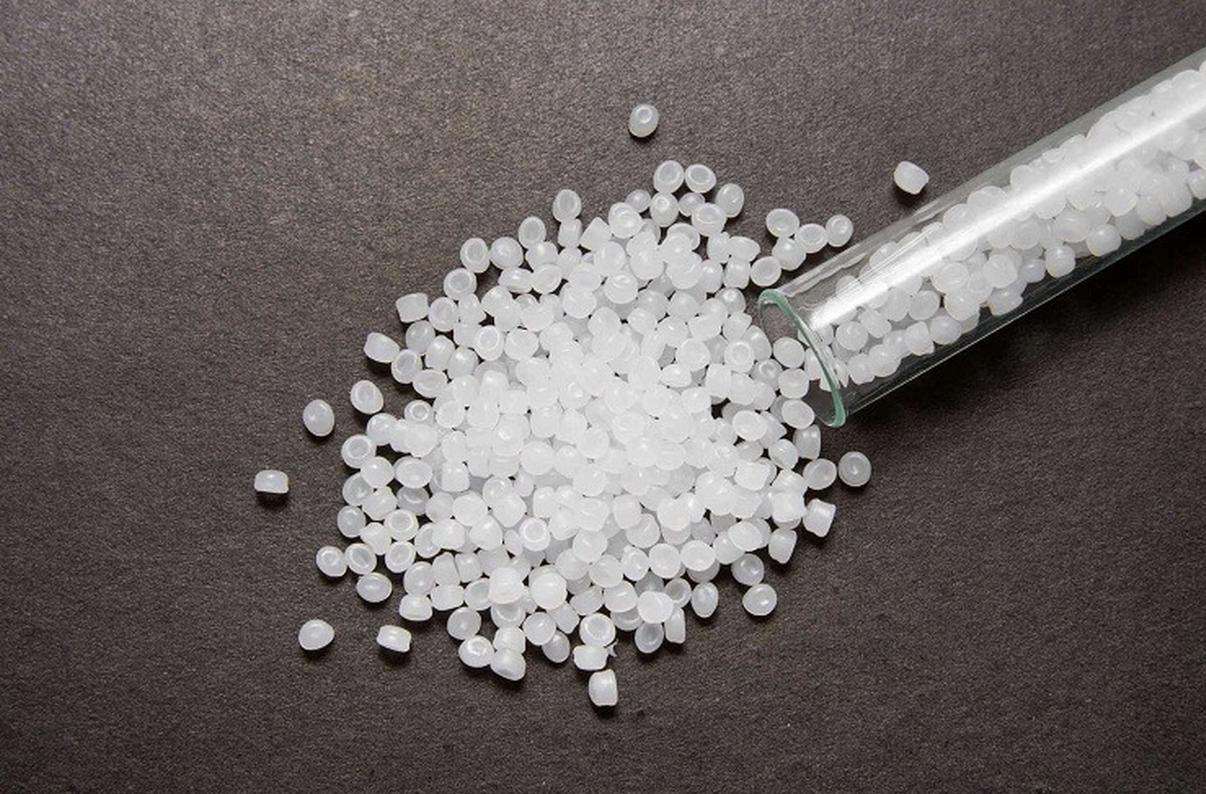Polyethylene is a ubiquitous plastic in our daily lives. However, can this type of plastic be applied in modern 3D printing technology? This article will provide a deeper understanding of the properties of Polyethylene, its potential applications, and its outstanding advantages.
1. Overview of Polyethylene
Polyethylene (PE) is a widely used polymer material in various daily life and industrial applications. With a simple yet unique chemical structure, polyethylene possesses numerous superior properties, making it one of the top choices for many applications.

Chemical properties: Polyethylene shares similar properties with saturated hydrocarbons, making it inert to many solutions. At room temperature, polyethylene does not react with acids, bases, potassium permanganate, or bromine water. However, when the temperature exceeds 70°C, polyethylene can dissolve in some organic solvents such as toluene, xylene, and mineral oil. Notably, polyethylene remains stable in water, alcohol, fats, acetone, and glycerin at all temperatures.
Physical properties: Polyethylene is white, slightly translucent, with a variable structure and high elasticity. It is non-conductive to both electricity and heat, and has excellent water resistance. Polyethylene's heat resistance is impressive, capable of withstanding temperatures up to 230°C for short periods. However, polyethylene also has limitations such as being susceptible to oxidation and degradation when exposed to UV rays or certain strong cleaning agents.
Advantages of polyethylene:
- Excellent moisture barrier and water resistance.
- Good heat resistance, maintaining properties at low temperatures (-58°C).
- Low cost, easy to process, and safe for users.
- Higher aesthetic appeal compared to other plastics.
Disadvantages of polyethylene:
- Can produce toxic substances when melted at high temperatures.
- Difficult to change its inherent color.
- Susceptible to oxidation and odor absorption.
- Despite some limitations, polyethylene remains one of the most widely used plastics in the world due to its superior properties, playing a crucial role in various industries and daily life.
2. Can Polyethylene be used for 3D Printing?

Polyethylene (PE) is one of the most common types of plastic worldwide, widely used in packaging, pipe manufacturing, and numerous other applications. However, when it comes to 3D printing technology, Polyethylene is not an ideal choice. The primary reason is its high shrinkage and deformation properties upon cooling, making it difficult to control the precise dimensions and shape of the 3D printed product.
Additionally, Polyethylene exhibits poor interlayer adhesion, resulting in products that are prone to delamination and have reduced durability. The high melting temperature of Polyethylene also necessitates maintaining a very high temperature for the print nozzle and bed, posing challenges during the printing process.
Therefore, utilizing alternative materials will enable you to produce high-quality 3D printed products that meet a diverse range of requirements, such as mechanical strength, dimensional accuracy, and aesthetic appeal of the final product.
See more: What type of plastic is used in 3d printers?
3. Practical Applications of Polyethylene
To overcome the limitations of Polyethylene, manufacturers and users often opt for other types of plastics with superior properties that will help you create high-quality 3D printed products to meet a variety of needs. Specifically:
- Automotive industry: PE is used to make fuel tanks in vehicles.
- Packaging: PE is used to produce packaging products such as boxes, trays, bottles, and caps. Additionally, PE is used to manufacture films, plastic bags, garbage bags, and food packaging materials.

- Printing industry: PE is used for printing labels due to its water resistance. Moreover, polyethylene has high adhesion and maintains color for a long time, making it suitable as a coating for various types of labels.
- Household goods: PE is used in the production of household items such as ice boxes, bowls, buckets, and sauce bottles. Polyethylene is safe and ensures food hygiene when used to store food.
- Toy manufacturing: PE is used in the production of toys due to its high durability and impact resistance.

- Electrical industry: PE is manufactured as an insulating material for coaxial cables and cable jackets in industrial electrical applications.
- Medical industry: PE is used in the production of artificial joints to replace knee and hip joints.
4. Alternatives to {olyethylene in 3D Printing

The use of specialized plastics significantly enhances product quality, reduces production costs, and expands the applications of 3D printing technology. These materials possess superior properties, enabling the creation of high-quality 3D printed products that meet diverse needs. Specifically:
- PETG (Polyethylene Terephthalate Glycol): Combines the advantages of PET with the durability of ABS.
- ABS (Acrylonitrile Butadiene Styrene): Offers high strength and heat resistance, making it suitable for industrial applications.
- ASA (Acrylonitrile Styrene Acrylate): Exhibits excellent UV resistance, making it ideal for outdoor applications.
- TPU (Thermoplastic Polyurethane): Possesses high elasticity, suitable for applications requiring flexibility.
- PET (Polyethylene Terephthalate): Offers high transparency, making it ideal for applications requiring aesthetics.
- HIPS (High Impact Polystyrene): Used as a support material and is soluble in solvents.
- PEEK (Polyether Ether Ketone): Offers high heat and chemical resistance, making it suitable for specialized applications.
- PVA (Polyvinyl Alcohol): Used as a support material and is water-soluble.
- PLA (Polylactic Acid): Is a bio-based plastic, environmentally friendly, and easy to use in 3D printing.
- PC (Polycarbonate): Offers high strength and stiffness, suitable for load-bearing applications.
- PP (Polypropylene): Offers high flexibility, suitable for applications requiring elasticity.
- Nylon: Offers high strength and toughness, suitable for mechanical applications.
5. Conclusion
Polyethylene (PE), one of the most common thermoplastics globally, has become an indispensable material in modern life. From everyday plastic bags to water pipes, PE is ubiquitous. However, when it comes to the demanding field of 3D printing, which requires precision, durability, and aesthetics, PE falls short as an optimal choice.

To overcome these limitations, manufacturers and users have turned to other types of plastics. With a wide range of properties, materials such as ABS, PLA, ASA, PET, PETG, PC, PEEK, PP, Nylon, TPU, PVA, and HIPS have emerged as top choices in the 3D printing industry. Each material possesses unique advantages, making it suitable for different applications.
In conclusion, selecting the right material for 3D printing is a crucial decision that directly impacts the quality and performance of the final product. With the diverse range of plastics available on the market, users have ample options to create innovative and unique products.
6. About EuroPlas
With extensive experience and continuous investment in research and development, EuroPlas has built a diverse portfolio of high-quality filler masterbatches. Not only meeting the demands of traditional industries, EuroPlas is also pioneering the development of new plastic solutions that align with sustainable development trends. To receive expert advice, please contact EuroPlas today. EuroPlas is committed to providing customers with optimal solutions and the most professional services.